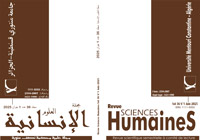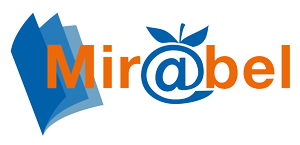اعتماد التعلم القائم على الفريق لتعزيز دافع القراءة في تدريس اللغويات
الكلمات المفتاحية:
التعلم القائم على الفريق، تحفيز القراءة، اللغويات، استبيان تحفيز القراءةالملخص
تبحث هذه الدراسة في تأثير التعلم القائم على الفريق على تعزيز دافع القراءة في اللغويات لطلاب السنة الأولى. تم إجراء استبيان تحفيز القراءة قبل تطبيق التعلم القائم على الفريق وبعد ذلك في تدريس اللغويات لمعرفة ما إذا كانت هذه الاستراتيجية التعليمية الجديدة يمكن أن تعزز بشكل فعال مشاركة الطلاب مع مواد القراءة. تضمنت الدراسة مجموعتين: واحدة تجريبية مع 25 مشاركًا والأخرى تحكم بنفس الرقم. أظهرت النتائج أن غالبية الطلاب لديهم دافع للقراءة المتوسطة، ولكن عند تطبيق التعلم القائم على الفريق ، كانت هناك زيادة كبيرة في كفاءة القراءة لدى الطلاب وكان هناك أيضًا تحسن كبير في دافعهم الجوهري، في حين لوحظت زيادة طفيفة في دوافعهم الخارجية. توفر النتائج رؤى للمدربين حول الطبيعة المثلثة والمتغيرة وشكل دافع القراءة، والتي تمكنهم من تطوير حب الطالب الأبدي لقراءة المواد اللغوية.
التنزيلات
المراجع
[1]. Baker, L., & Wigfield, A. (1999). Dimensions of children's motivation for reading and their relations to reading activity and reading achievement. Reading Research Quarterly, 34(4), 452-477.
[2]. Bandura, A. (1997). Self-efficacy: The exercise of control. New York: Freeman.
[3]. Burgess, M., MacGregor, A., &Mellis, C. (2014). Applying established guidelines to team-based learning programs in medical education. Academic Medicine, 89(5), 776-781. https://doi.org/10.1097/ACM.0000000000000215
[4]. Deci, E. L., & Ryan, R. M. (1985). Intrinsic motivation and self-determination in human behavior. New York: Plenum.
[5]. Duke, N. K., & Pearson, P. D. (2002). Effective practices for developing reading comprehension. Journal of Education, 189(1-2), 107-122.
[6]. Falchikov, N. (2005). Improving assessment through student involvement: Practical solutions for aiding learning in higher and further education. Routledge.
[7]. Guthrie, J. T., &Wigfield, A. (2000). Engagement and motivation in reading. In M. L. Kamil, P. B. Mosenthal, P. D. Pearson, & R. Barr (Eds.), Handbook of reading research (Vol. 3, pp. 403-422). Mahwah, NJ: Lawrence Erlbaum Associates.
[8]. Guthrie, J. T., Wigfield, A., &Perencevich, K. C. (2004). Motivating reading comprehension: Concept-oriented reading instruction. Mahwah, NJ: Lawrence Erlbaum Associates.
[9]. Herreid, C.F. 2007. Start with a Story: The case method of teaching college science. US, Virginia: National Science Teachers Association.
[10]. Hawkins, D. (2014). A Team-Based learning guide for students in health professional schools. Bloomington: Author House.
[11]. Komiyama, R. (2013).Factors underlying second language reading motivation of adult EAP students. Reading in a Foreign Language. N 2 (volume25),pp 149-169.
[12]. Michaelsen, L. K., Knight, A. B., & Fink, L. D. (2004). Team-based learning: A transformative use of small groups in college teaching. Sterling, VA: Stylus Publishing.
[13]. Marsela, S. (2017). The Correlation between reading motivation and reading comprehension achievement of the eleventh grade students of man 2 Palembang (Doctoral dissertation). University of Palembang, Indonesia.
[14]. Piaget, J. (1970). Science of education and the psychology of the child. New York: Viking Press.
[15]. Pressley, M. (2002). Reading instruction that works: The case for balanced teaching (2nd ed.). New York: Guilford Press.
[16]. Sibley, J., & Ostafichuk, P. (2014). Getting started with team-based learning. Stylus Publishing, LLC
[17]. Sibley, J., & Spiridonoff, S. (2017). Getting started with Team-Based Learning. Sterling, VA: Stylus Publishing.
[18]. Thompson, B. M., Schneider, V. F., Haidet, P., Levine, R. E., McMahon, K. K., Perkowski, L. C., & Richards, B. F. (2007). Team-based learning at ten medical schools: Two years later. Medical Education, 41(3), 250-257.
[19]. Vygotsky, L. S. (1978). Mind in society: The development of higher psychological processes. Harvard University Press.
[20]. Wentzel, K. R. (1999). Social-motivational processes and interpersonal relationships: Implications for understanding motivation at school. Journal of Educational Psychology, 91(1), 76-97.
[21]. Wigfield, A., &Eccles, J. (2002). Expectancy-value theory of achievement motivation. Contemporary Educational Psychology, 25(1), 68-81.
[22]. Wigfield, A., Guthrie, J. T., &McGough, K. (1995). A questionnaire measure of children's motivations for reading. Instructional Resource No. 22. National Reading Research Center.
[23]. Wigfield, A., Guthrie, J. T. (1997).Relation's of Children's Motivation for reading to the amount and breadth of their reading. Journal of Educational Psychology, 893, 420.
التنزيلات
منشور
إصدار
القسم
الرخصة
الحقوق الفكرية (c) 2025 مجلة العلوم الإنسانية

هذا العمل مرخص بموجب Creative Commons Attribution-NonCommercial 4.0 International License.












